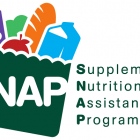How Much Can a Disabled Person Get in Food Stamps – SNAP on Disability

The impact of disability on an individual goes beyond their health; it can also significantly affect their financial security. Data from the Centers for Disease Control and Prevention (CDC) indicates that one in three adults (age 18-44) with disabilities can’t meet their healthcare needs due to cost.
To make things worse, people with disabilities often find it difficult to afford healthy food for healthy living. The good news is that low income families in the US can qualify for food stamps or Supplemental Nutrition Assistance Program (SNAP) benefits, which can assist them in buying healthy foods.
Interestingly, SNAP has special rules for households with elderly or disabled individuals. But exactly how much can a disabled person get in food stamps? Here’s what you should know.
Can You Qualify for SNAP if You Are on Disability?
Many people with disability receive some disability benefits like Supplemental Security Income (SSI) payments or Social Security Disability Insurance (SSDI). If you are one of those, you may wonder if you can get SNAP while collecting disability payments, considering they are both federal programs.
You can qualify for and receive SNAP, even if you already get disability payments. In fact, being disabled makes it easier to qualify for SNAP, although SSDI or SSI eligibility is a guarantee that you will qualify for food stamps.
Food stamps or SNAP eligibility is firstly based on the income and resources of your household. The good news is that SNAP gives disabled persons special waivers when it comes to counting resources and income. Since not all incomes of disabled persons are counted toward SNAP eligibility, it is easier for these individuals to qualify for food stamps.
Who Is Considered Disabled?
To receive SNAP benefits specially designed for disabled persons or households with disabled members, you must fit into the program’s criteria for a disabled person. The general classification of disabled persons includes:
- Mobility: Having serious difficulty walking even short distances or climbing stairs
- Hearing: Having a hard time hearing or deafness
- Vision: Difficulty seeing or blindness
- Self-care: Inability to bathe or dress yourself
- Independent living: Having a hard time running errands on your own
- Cognition: Serious difficulty remembering or concentrating. It can also affect your ability to make decisions
All of the above notwithstanding, you may not be considered disabled (or qualify for food benefits) under SNAP benefit rules if you are not receiving disability payments. According to the United States Department of Agriculture (USDA), you are disabled if:
- You receive state or federal disability payments
- You are considered disabled under the SSI program
- You are a child or surviving spouse of a permanently disabled veteran who receives Veterans Affairs (VA) benefits
- You are a veteran who requires regular attendance and aid or a permanently homebound veteran
- You receive SSI blindness payments
- You are a retired railroad worker eligible for Medicare and receive an annuity under the Railroad Retirement Act
If you are disabled and meet any of these criteria, you may qualify for and receive SNAP food benefits in addition to other disability assistance.
How Much Can a Disabled Person Get in Food Stamps?
The amount you can get in food stamps monthly as a disabled person depends on where you live, the size of your household, and your resources and income.
For example, a 1-person household in the lower 48 states and the District of Columbia can get a maximum SNAP allotment of $281 per month. In contrast, the same household size in Hawaii can receive up to $538 monthly.
On the lower end of the spectrum, households of 1 to 2 persons in DC and the 48 contiguous states can get a minimum of $23 per month in SNAP food benefits. Conversely, the same household size in Hawaii can receive a minimum of $43 monthly from the food stamp program.
The difference in benefit amount or SNAP allotment is due to cost-of-living adjustments for the fiscal year 2023, effective from October 2022 through September 2023. Hawaii and Alaska, as well as territories like Guam and the US Virgin Islands, have higher SNAP benefits because those places have a higher cost of living than the 48 contiguous states and the District of Columbia.
Here’s a breakdown of the maximum SNAP allotment and benefit amount in the lower 48 states and DC:
- Household of 1: $281
- Household of 2: $516
- Household of 3: $740
- Household of 4: $939
- Household of 5: $1,116
- Household of 6: $1,339
- Household of 7: $1,480
- Household of 8: $1,691
- Larger households: $211 for each additional person
Maximum SNAP allotment details for various household sizes in Hawaii, Alaska, and other US territories can be found here.
Are Disabled Non-Citizens Eligible for SNAP?
Generally, undocumented non-citizens are not eligible to receive SNAP benefits. To qualify for food assistance benefits, you must be a US citizen or a lawfully present non-citizen.
That said, it is possible for disabled persons to get SNAP food assistance even if they are not US citizens. You may qualify for SNAP food benefits if you are a disabled non-citizen and can show that you have been receiving disability-related benefits or assistance.
In some cases, non-citizens without disabilities may also qualify for SNAP if they have been living in the US for a minimum of five years or are children under 18. In addition to these criteria, you must meet other SNAP eligibility requirements to qualify for benefits, regardless of your citizenship and disability status.
Why You Should Get SNAP Even if You Are on Disability
Health problems like heart disease, diabetes, obesity, and other chronic conditions are more common in people with disability. To make things worse, disability can seriously affect your employment and income, making it difficult to afford nutritious food. If you are not eating healthy foods, it can be difficult to fight these diseases and illnesses that often affect people with disabilities.
With SNAP benefits, SNAP recipients can buy fresh fruits and vegetables and other eligible food items to help them stay healthier and reduce worries about healthcare costs. If you qualify for SNAP, you will receive benefits loaded onto your Electronic Benefits Transfer (EBT) card every month.
The card (which looks like regular bank cards) replaces food stamps, making it convenient to shop nationwide at retail stores or supermarkets that accept EBT cards.
Bottom line: How much can a disabled household member get in food stamps? The amount depends on the individual’s monthly income, resources, household size, and location. It is possible for a disabled person receiving a disability benefit to receive SNAP benefits while still getting SSI payments.



